The following is via Chabad.org:
The Chabad center in Munich, Germany, seems like thousands of others in 100 countries and territories around the globe. Located in the center of town, it is the site of busy Jewish activity—prayers, holiday celebrations, Torah classes—from morning until evening.
What sets it apart is that it sits directly across the street from the nine-room luxury apartment at Prinzregentenplatz 16, which became home to Adolf Hitler in 1929. It was there that he conducted high-level negotiations prior to the start of World War II with such leaders as Prime Minister of the United Kingdom Neville Chamberlain, Italian Prime Minister and leader of the National Fascist Party Benito Mussolini, and others. Following Germany’s defeat and Hitler’s death, the building was eventually occupied by the Munich Financing Office for the state of Bavaria. The second floor (third floor in American convention), including Hitler’s apartment, now houses the headquarters of the regional police of Munich and is not open to the public.
“We always knew about the history of that building,” says Robert Rajber, who grew up in Munich in the 1960s and is now president of the city’s Maccabi sports club. “But we made nothing of it. Every other building in this city has a dark Holocaust history, and if you cannot live with that, you cannot live in Munich.”
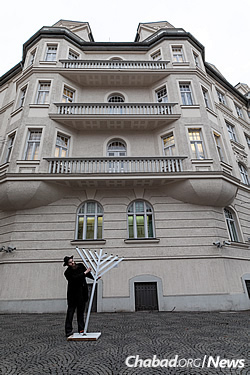
Rajber, whose parents were Polish-born Holocaust survivors, says “in those days, Judaism kept a low profile in city. The synagogue was in the backyard; there were no signs. If you were not Jewish, you could almost not know that there was Jewish life here.”
He says all that changed when Rabbi Yisroel and Chana Diskin came to establish Chabad Lubawitsch Munich in 1988. They had arrived after decades of dedicated work by Rabbi Avrohom Yitzchak Glick of London, a roving Chabad emissary, who initiated a Chabad presence in many European nations.
“The Diskins taught us to celebrate our Judaism—to be proud and positive about our identity, not to shy away from it or pretend it does not exist,” says Rajber. “Before they came, I wondered what they could possibly add to our community, but they have really changed everything here for the better.”
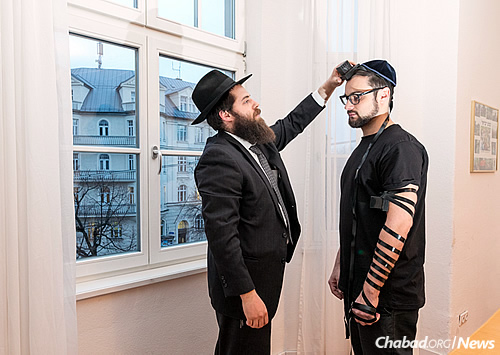
Chabad moved in across the way from Hitler’s penthouse apartment in 1993. Also located on the second floor, the Chabad center’s presence is clearly marked by a sign next to the street-level entrance and does not hide that it houses Jewish activity.
In the years since, it has become a magnet for the city’s Jewish residents and tourists. The youngest Jewish Münchner comes with their parents for children’s programs, youth minyan and bar and bat mitzvah preparation, while the older set is attracted to lectures, holiday meals and other events that take place regularly.
At the time the Diskins arrived, the Jewish community was estimated at about 3,000 people. With the fall of the Iron Curtain in neighboring Russia to the east, that number swelled to 10,000. In addition, many thousands of Israelis living there who have not officially joined the community participate regularly in Chabad activities.

In 2010, the Diskins’ activities expanded to the point that they were joined by their grown daughter, Chaya Mushka, and her husband, Rabbi Yochanan Gordon, who focus on children’s activities and advanced programs geared for people who have embraced Jewish observance. In 2015, their team grew again when their daughter Malky and her husband, Rabbi Levi Freedman, opened a division focusing specifically on teens and students.
“For the most part, we’re all oblivious to the fact that the building across the way has such a dark past,” says the British-born Gordon. “That is our ultimate triumph. Hitler schemed to snuff out Judaism in every part of the world. And here we are across the street from his home, thriving and growing, barely conscious of the fact that he once lived so close by.”
He reports that in his years at the center, they have never experienced any fallout from neo-Nazis, white supremacists or other groups with racist undertones who may be attracted to the former residence of history’s most diabolical statesman. On the contrary, he says that the only time he even thinks of Hitler’s apartment is when he shows it to visitors as a demonstration of Judaism’s triumph in Germany.
“From Chabad, we learned to be proud of our Judaism and to live it up,” attests Rajber. “It feels good to have our Chabad House there.”
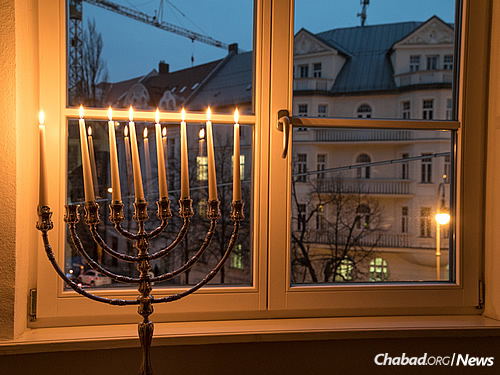
(Source: Chabad.org)




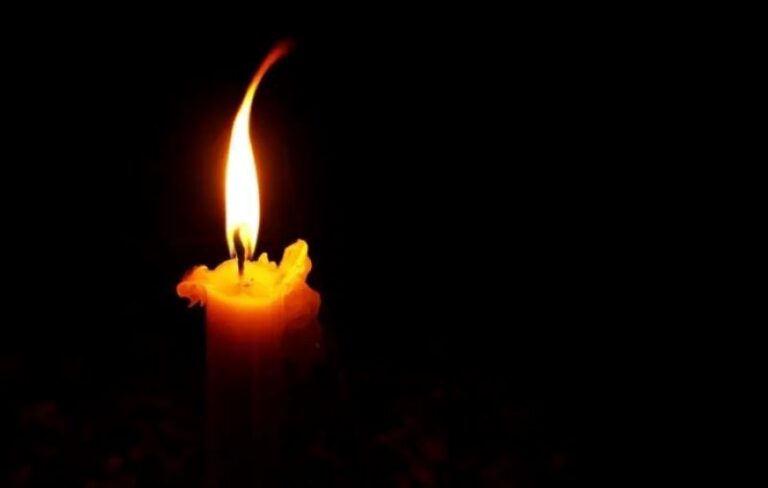
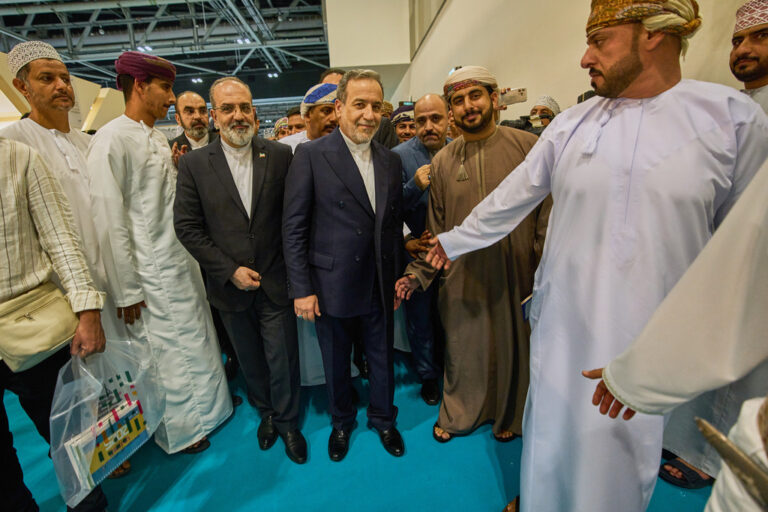


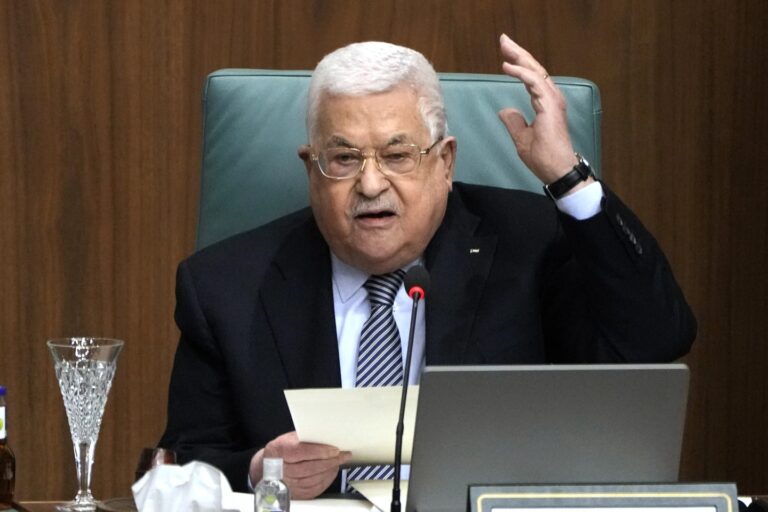
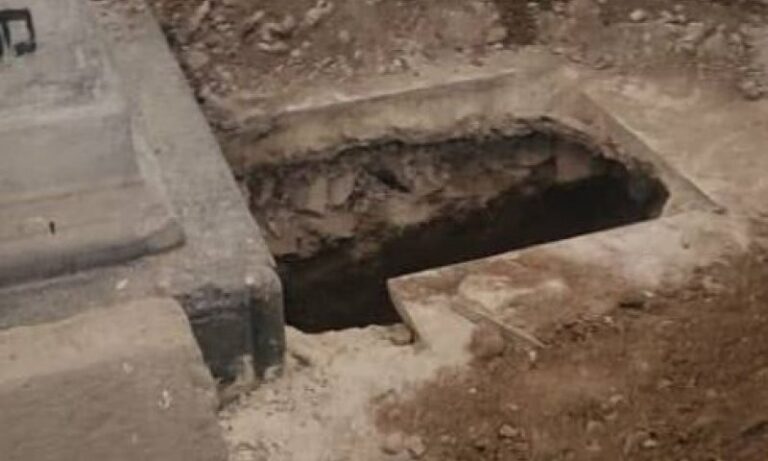


2 Responses
How is he lighting a “false menorah”? curved branch
It’s for “illustration purposes.” Duh. Probably for a newspaper. Chabad’s Menorahs are in the style of the RaMBaM and are not lit in windows or outside; we light in a doorway opposite the mezuzah.